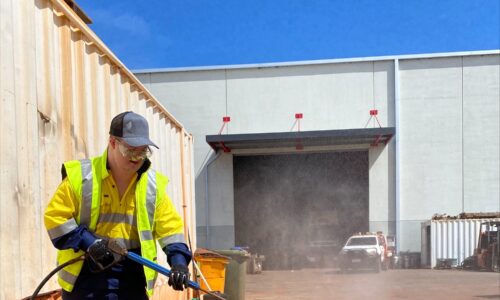The Future of AI in Drilling Rigs relies on EQ
With the advent of smarter technologies, workplaces and workforces are changing. Automation and Machine Learning have many questioning if they will have a job in the future. The answer is yes, but it will be a different job, one which will require building on existing knowledge and skills. Our people are what make Ranger Drilling great, and we’re investing in making sure they’re well prepared for the future.
As well as machine learning, we’re focusing on what our people need to be learning. For example, identifying and developing Emotional intelligence (EQ) is key to Ranger Drilling’s approach to our workforce. This is the ‘other kind of smart’ that affects how we navigate social complexities, manage behavior and make decisions that achieve positive results. As more repetitive tasks are automated and jobs evolve, individuals and teams who can problem-solve and adjust to changes will continue to be an asset in the industry.
And every industry need to be prepared for change. This year, Ranger Drilling has integrated a Cortex MDP (Material Data Processing) system to our new Rig 17, a system which uses Machine Learning to track and log drilling rig parameters, plus engine/machine health, with data displayed digitally to the operator and remotely in Perth.
Developed by Cortex Intelligence Systems, this automation can paint a large scale picture of geological deposits, complimenting traditional bagged & tagged samples for geologists.
How has the MDP system changed out workflow? Our operators are now able to make decisions based on intuitive graphic displays showing system pressures, temperatures and speeds, as well calculated and mathematically modeled projections of ground conditions. For one, it results in a lower likelihood of downtime from a broken drill downhole.
In discussing the mining sector for their 2018 edition of Tracking the Trends, Deloitte proposes, “As the digital mine becomes a reality, the nature of work is poised to change dramatically—at both the mine site and in the back office. Technologies like robotic process automation (RPA) and artificial intelligence (AI) will enable core mining activities to be performed from locations that can support a more diverse and inclusive workforce.”
Once trained on the rig, Ranger Drilling staff find the controls intuitive, a leap forward from the analogue dials and gauges of traditional rigs. When combined with automated rod-handling, it keeps hands safely out of the way, further increasing efficiency.
Rig 17’s automation processes demonstrate the benefits of including smart technologies within the workplaces of today and the future. Training employees to work alongside automation and AI can produce outcomes beyond what either could achieve alone.
An example of this comes from in a Harvard-based study involving searching for breast cancer cells. They found that pathologists beat the machines with 96 percent accuracy (versus 92 percent). But when humans and AI combined forces, they accurately identified 99.5 percent of cancerous biopsies.
Strategy and consulting firm Accenture (which partner with more than three-quarters of the Fortune Global 500) put it well in Reworking the Revolution: “Just as Henry Ford could not have foreseen how the motor car would propel tourism, retail consumption, labor mobility or urbanization, we cannot know what opportunities await those who lead the AI revolution.”
Ranger Drilling is excited to be a part of the new frontier in mining, providing our people with the relevant experience and training to excel as technology evolves the way we work.

